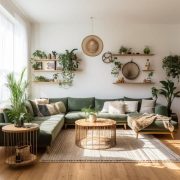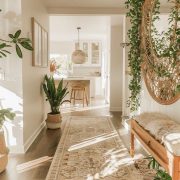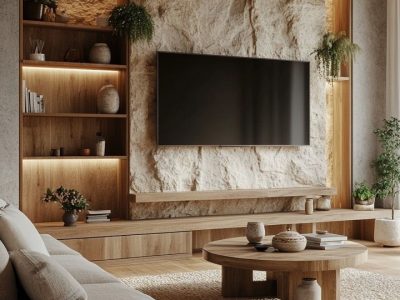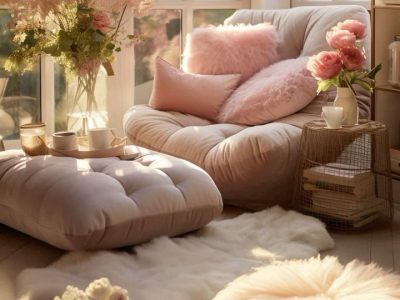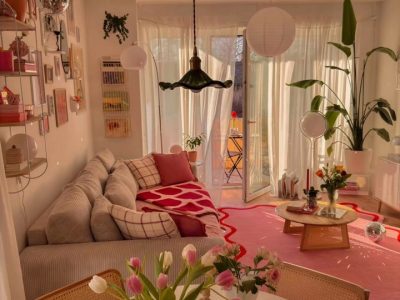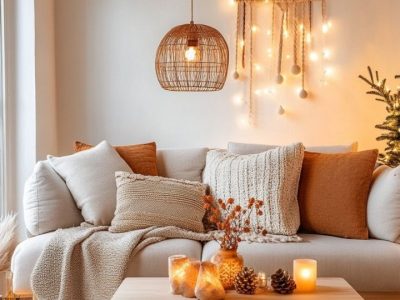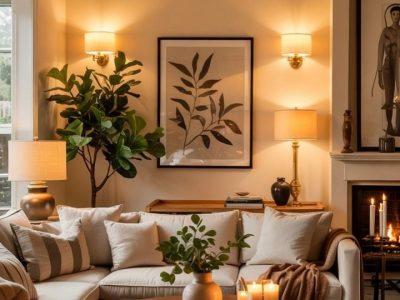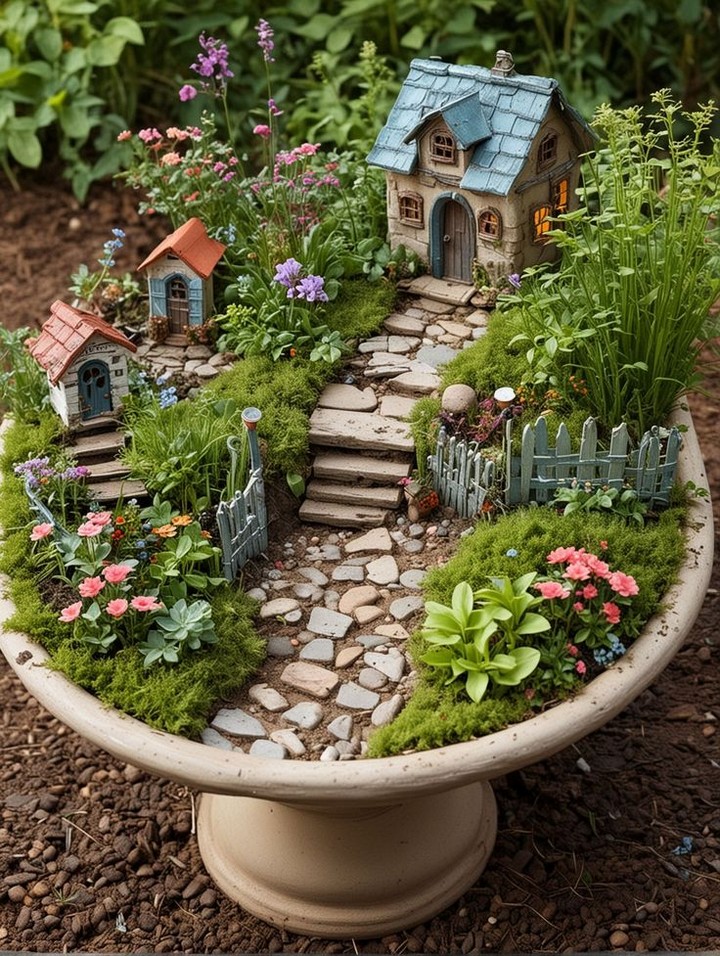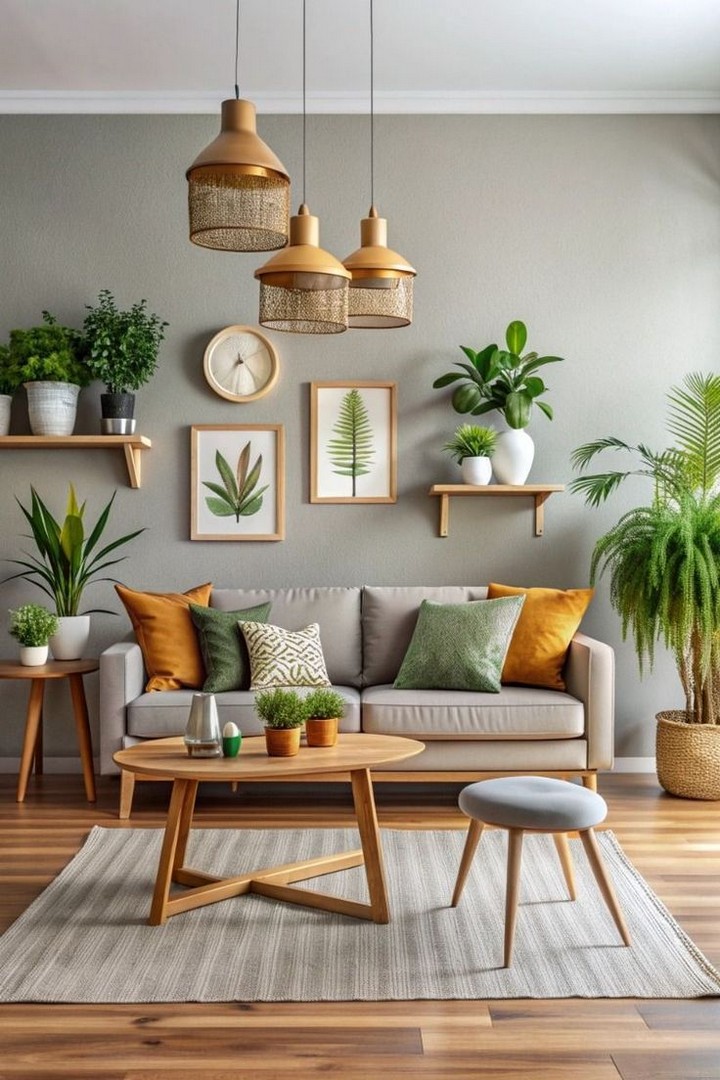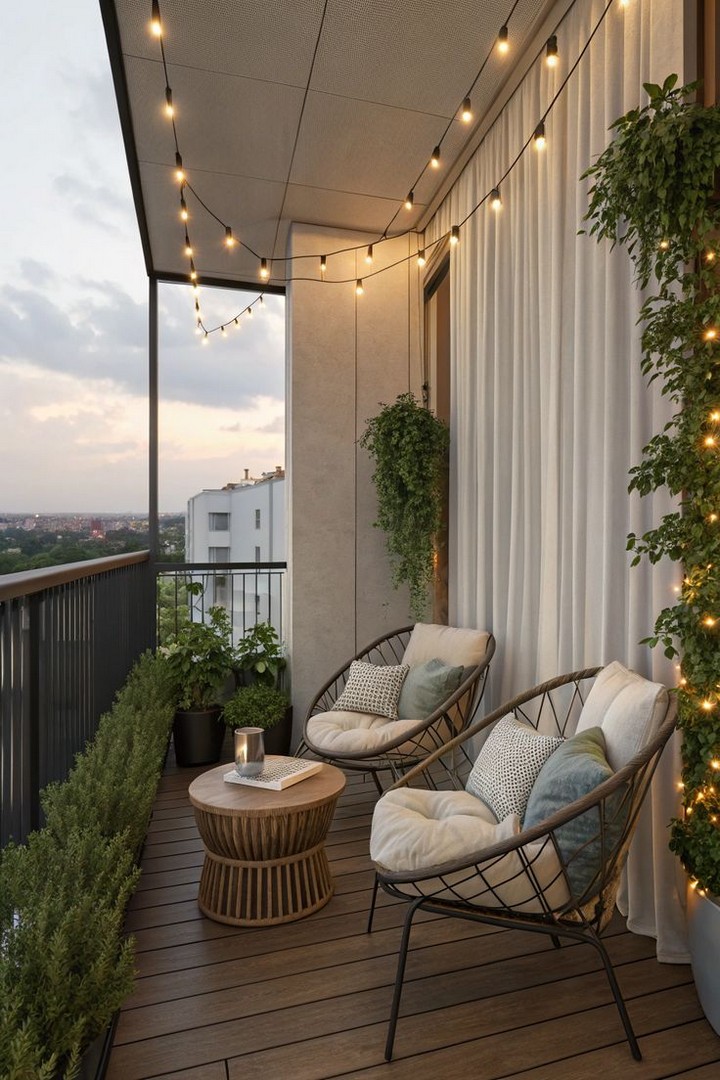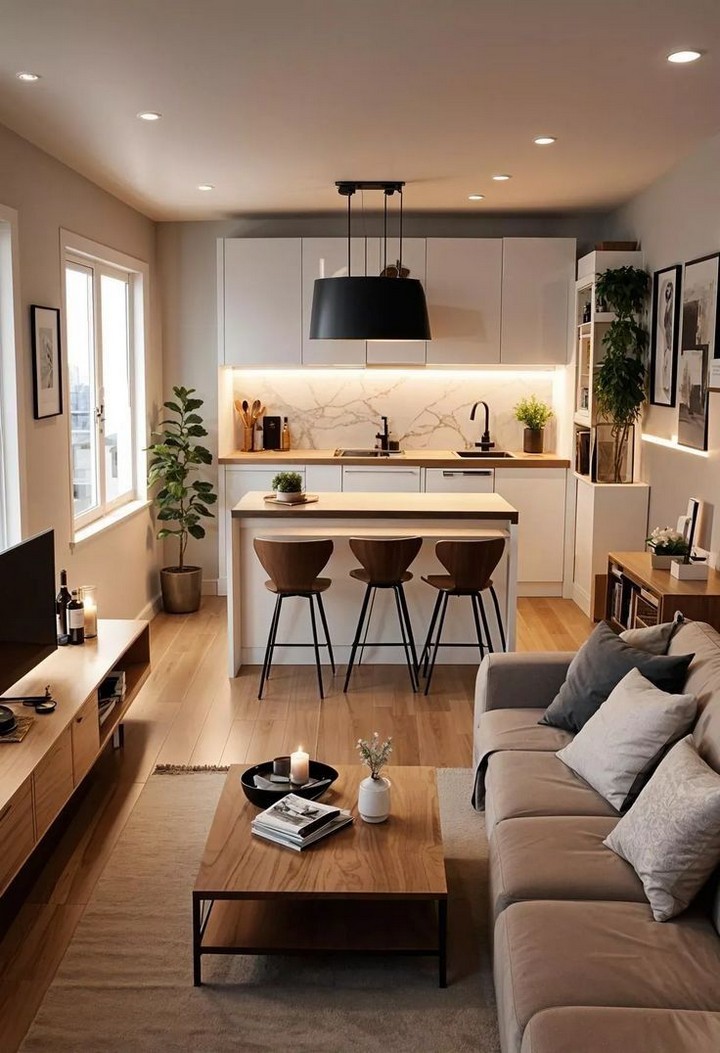Brown has emerged as a timeless color choice that brings warmth, sophistication, and versatility to living spaces. Far from being dull or outdated, brown decor creates a foundation of comfort that can be both luxurious and inviting. Whether you’re drawn to rich chocolate tones, subtle taupes, or warm caramels, incorporating brown into your living room can transform it into a cozy sanctuary that feels both grounded and refined.
This article explores 15 innovative brown decor living room ideas that showcase how this earthy hue can be reimagined for modern homes. From statement furniture pieces to subtle accents, we’ll guide you through creating a space that feels both on-trend and timeless.
Now, let’s explore our curated list of 15 brown decor living room ideas that span different styles, budgets, and preferences.
1. Layered Brown Textiles for Depth and Dimension
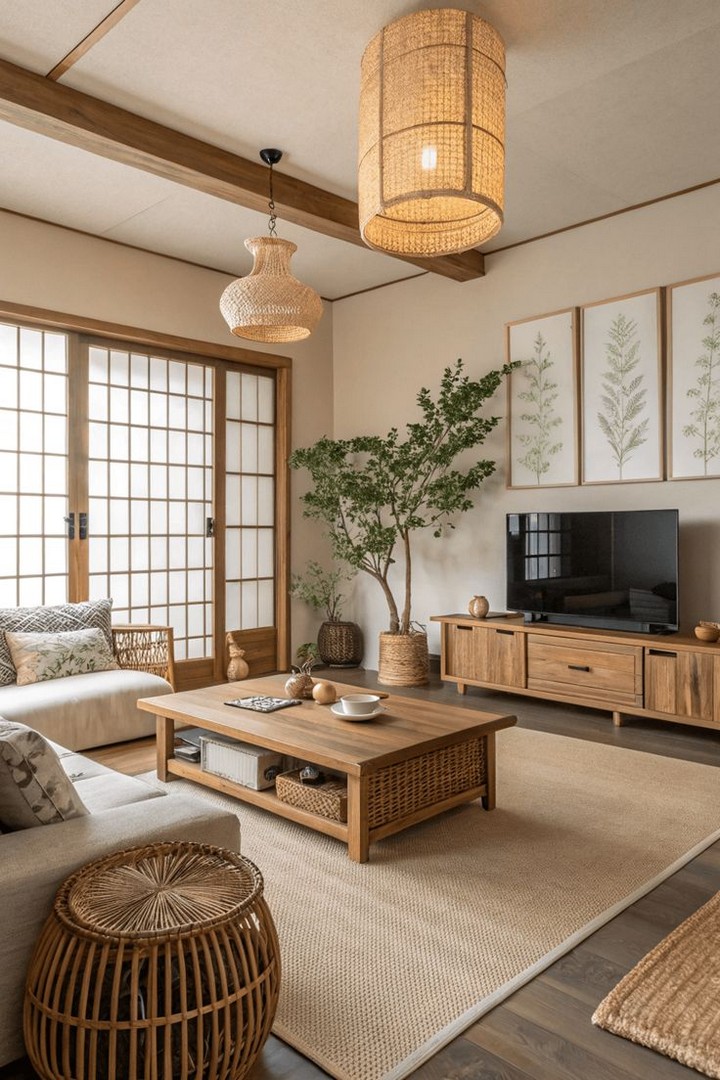
One of the most effective ways to incorporate brown into your living room is through textiles in various shades and textures. Consider layering a chocolate brown sofa with caramel-colored throw pillows and a taupe area rug. Add a faux fur throw in cinnamon or cognac to create visual interest through tonal variation.
This approach works particularly well in neutral spaces where the layered browns become the focal point without overwhelming the room. The key is to vary both the shade and texture—think smooth leather alongside nubby boucle or plush velvet against woven cotton—to create a rich, multi-dimensional look that invites touch.
2. Statement Brown Leather Sofa
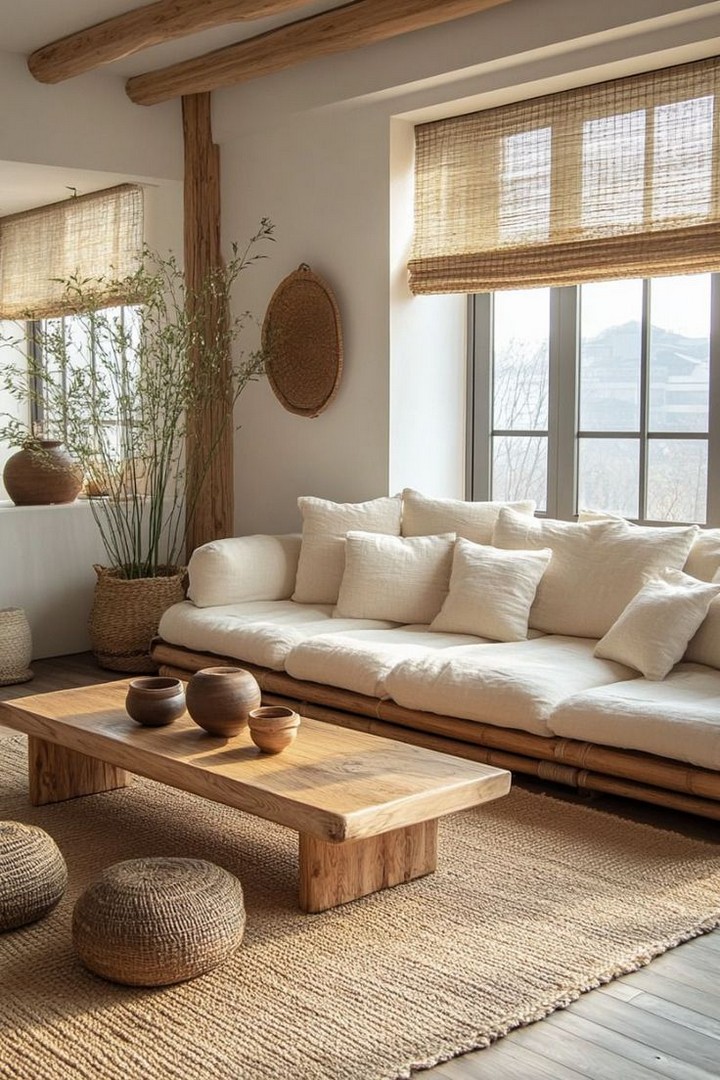
A quality leather sofa in a rich brown shade serves as both a timeless investment piece and a room anchor. Modern interpretations of brown leather furniture have moved beyond traditional styles to include sleek mid-century silhouettes, plush contemporary designs, and even modular arrangements.
When selecting a brown leather sofa, consider how it will patina over time—most quality leathers develop a beautiful worn character that adds to their appeal. Pair your statement sofa with lighter elements throughout the room to prevent the space from feeling heavy. Light-colored walls, metallic accents, and glass surfaces create balance while allowing your leather piece to shine.
3. Brown and Blue Color Scheme
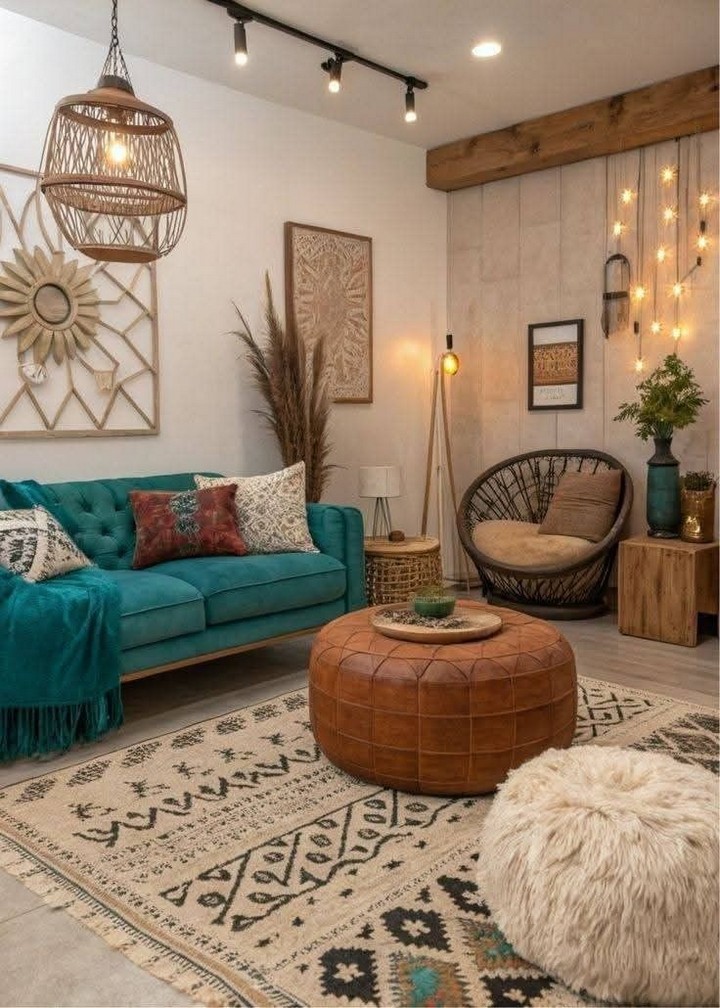
Brown and blue create a naturally harmonious palette that references earth and sky. This timeless combination works across design styles, from coastal to contemporary.
For a sophisticated look, pair chocolate brown furniture with navy blue accents, or create a more serene atmosphere with taupe walls and soft powder blue textiles. The cool undertones of blue provide the perfect counterbalance to brown’s warmth, creating visual tension that feels both balanced and interesting.
Consider a brown leather sofa with blue velvet pillows, or navy curtains against walnut wood furniture. This pairing works particularly well in rooms with ample natural light, as it prevents the brown elements from feeling too heavy.
4. Wood-Paneled Accent Wall
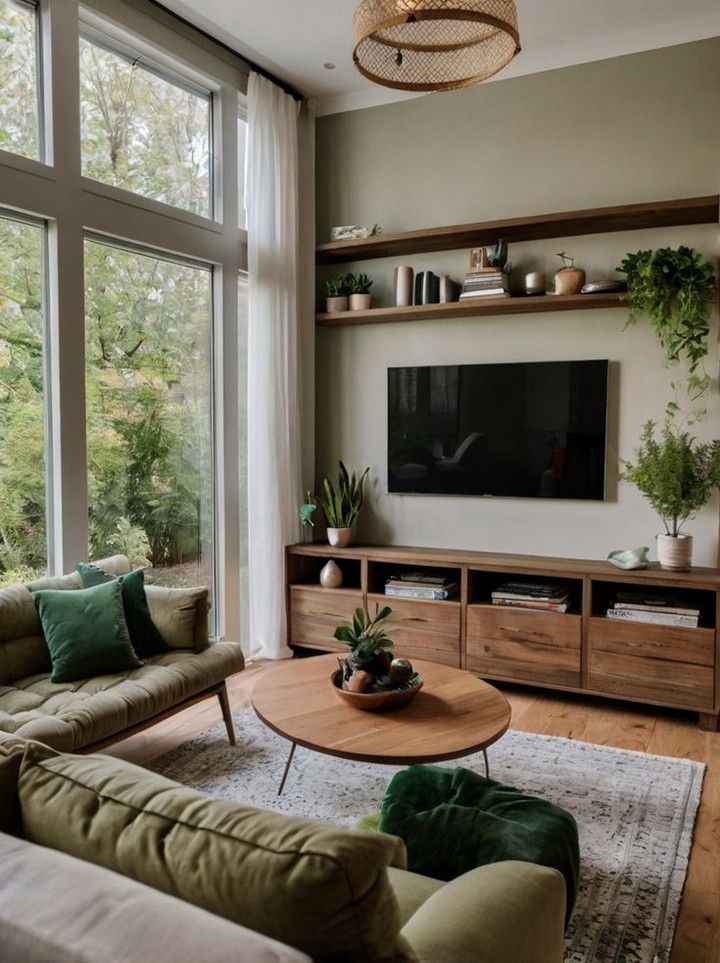
A brown wood-paneled wall creates architectural interest while bringing natural warmth to your living room. Modern interpretations of wood paneling have moved beyond dated 1970s treatments to include slat walls, geometric patterns, and mixed-width planking.
For a contemporary look, consider walnut panels installed horizontally, or create a focal point with herringbone or chevron patterns. To prevent overwhelming the space, limit the paneling to one accent wall, ideally the one that anchors your main seating arrangement or fireplace.
Balance the richness of wood paneling with lighter furniture and accessories. A cream sofa, glass coffee table, and metallic accents create contrast that highlights the beauty of the wood tones.
5. Brown as a Neutral Base for Bold Accents
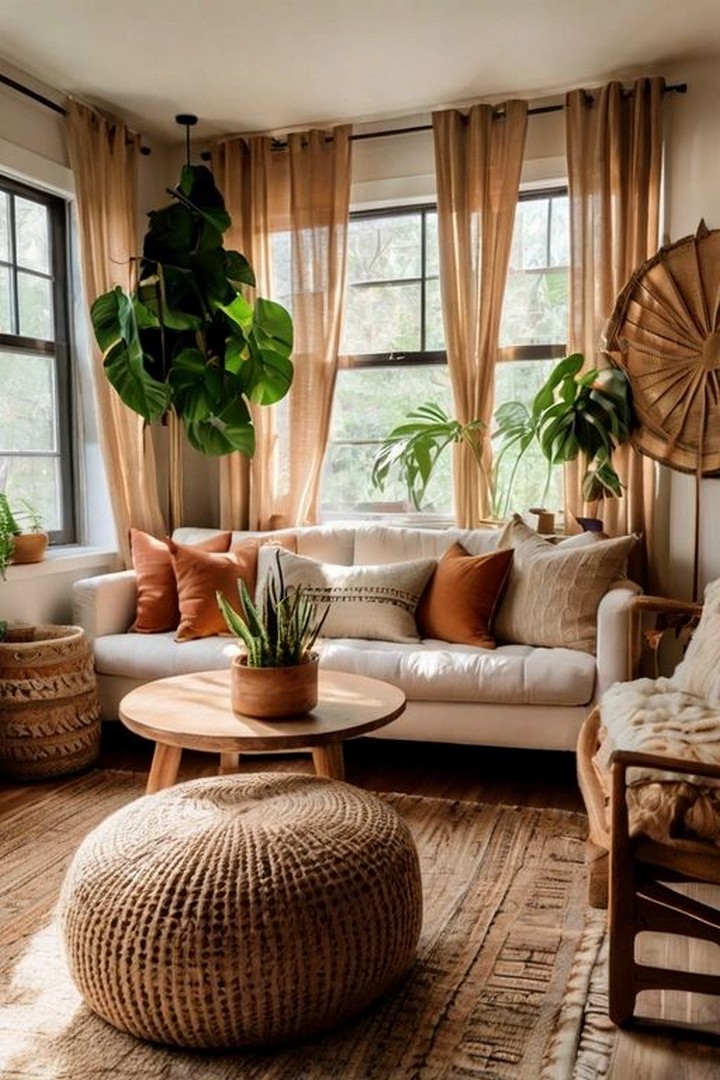
Using brown as a neutral foundation allows you to introduce bold color accents that might otherwise feel overwhelming. A brown sofa, coffee table, and area rug create a grounding effect that can support vibrant accessories in jewel tones like emerald green, sapphire blue, or ruby red.
This approach works particularly well for those who appreciate color but want a living room that feels sophisticated rather than chaotic. The brown elements absorb visual energy, allowing the brighter accents to shine without competing.
Consider accessories like colorful art, bright throw pillows, or statement lamps against your brown base pieces. This creates a curated look that can be easily updated as your color preferences evolve.
6. Mixed Brown Wood Tones

Interior designers have moved away from the old rule that all wood tones in a room should match. Today’s more eclectic approach celebrates the mix of different brown wood finishes—from blonde oak to rich mahogany—creating depth and visual interest.
To successfully mix wood tones, establish a dominant brown as your anchor (often your largest pieces like flooring or a entertainment center), then introduce complementary woods that share either warm or cool undertones. Create intentional contrast rather than pieces that almost match but don’t quite align.
This approach works particularly well in spaces with architectural wooden elements like exposed beams or built-in shelving, where the mixture of tones creates a collected-over-time aesthetic.
7. Brown Velvet for Luxurious Texture

Few materials communicate luxury like brown velvet. Whether used on a sofa, accent chairs, or even as drapery, brown velvet adds a sense of opulence and comfort to living rooms.
The appeal lies in both the rich color and the way velvet interacts with light—creating subtle shifts in tone as you move through the space. Look for chocolate, cinnamon, or cognac velvet for maximum impact.
To prevent a heavy look, balance velvet pieces with lighter elements like glass tables, mirror accents, or metallic finishes. This contrast highlights the sumptuous texture while keeping the overall feel contemporary.
8. Chocolate Brown Walls with Light Furniture
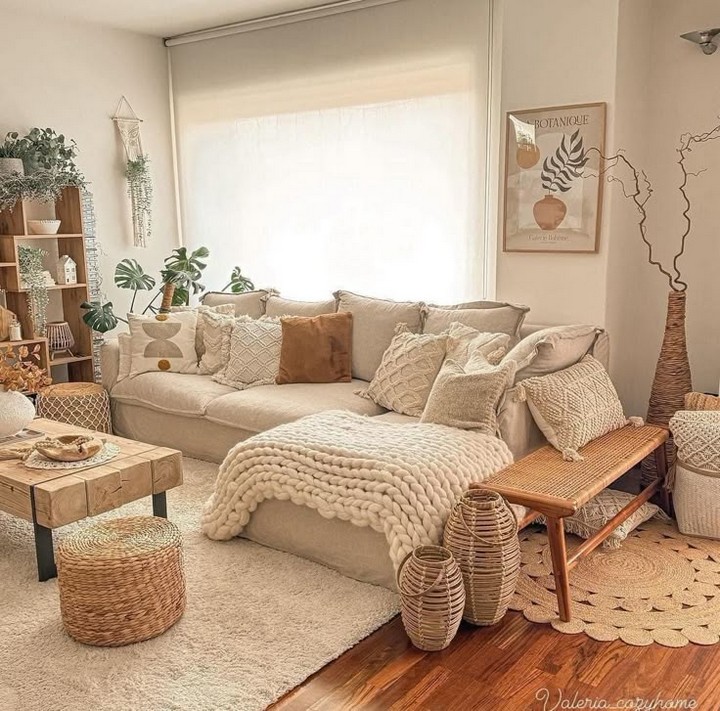
For a dramatic yet sophisticated living room, consider painting walls in a rich chocolate brown and furnishing the space with lighter pieces. This reverse approach to the typical dark furniture/light walls formula creates an enveloping, intimate atmosphere that feels both bold and refined.
When working with dark brown walls, lighting becomes crucial—ensure ample illumination through a mix of overhead, task, and accent lighting. Light-colored furniture in creams, whites, or pale grays provides necessary contrast, while metallic accents add dimension and reflect light throughout the space.
This look works particularly well in rooms with architectural interest like crown molding or wainscoting, as the dark brown paint highlights these features dramatically.
9. Brown Geometric Patterns
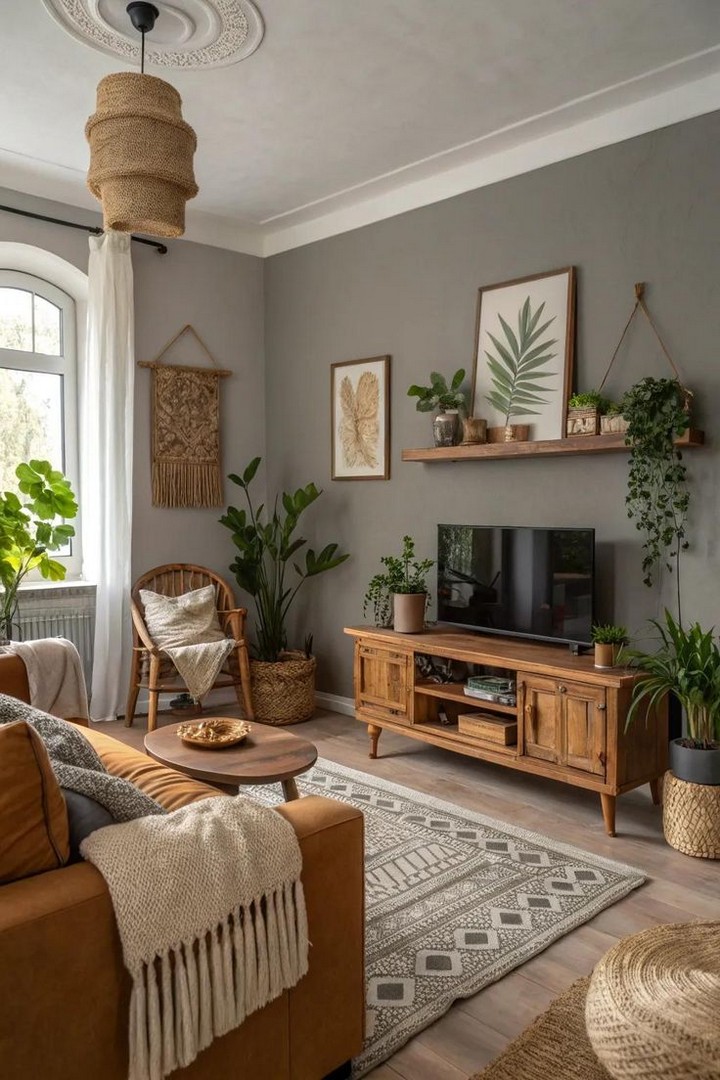
Geometric patterns featuring brown can add visual interest and contemporary flair to living rooms. Look for area rugs, throw pillows, or even wallpaper that incorporate brown in modern geometric designs.
This approach allows you to introduce brown in a controlled, intentional way without committing to large furniture pieces. It works particularly well in minimalist or contemporary spaces where pattern provides welcome visual texture.
For maximum impact, choose one statement geometric piece—like a large area rug with a brown and cream pattern—and keep other elements more subdued. This creates a focal point while preventing the room from feeling busy or overwhelming.
10. Natural Brown Elements: Rattan, Jute, and Wicker
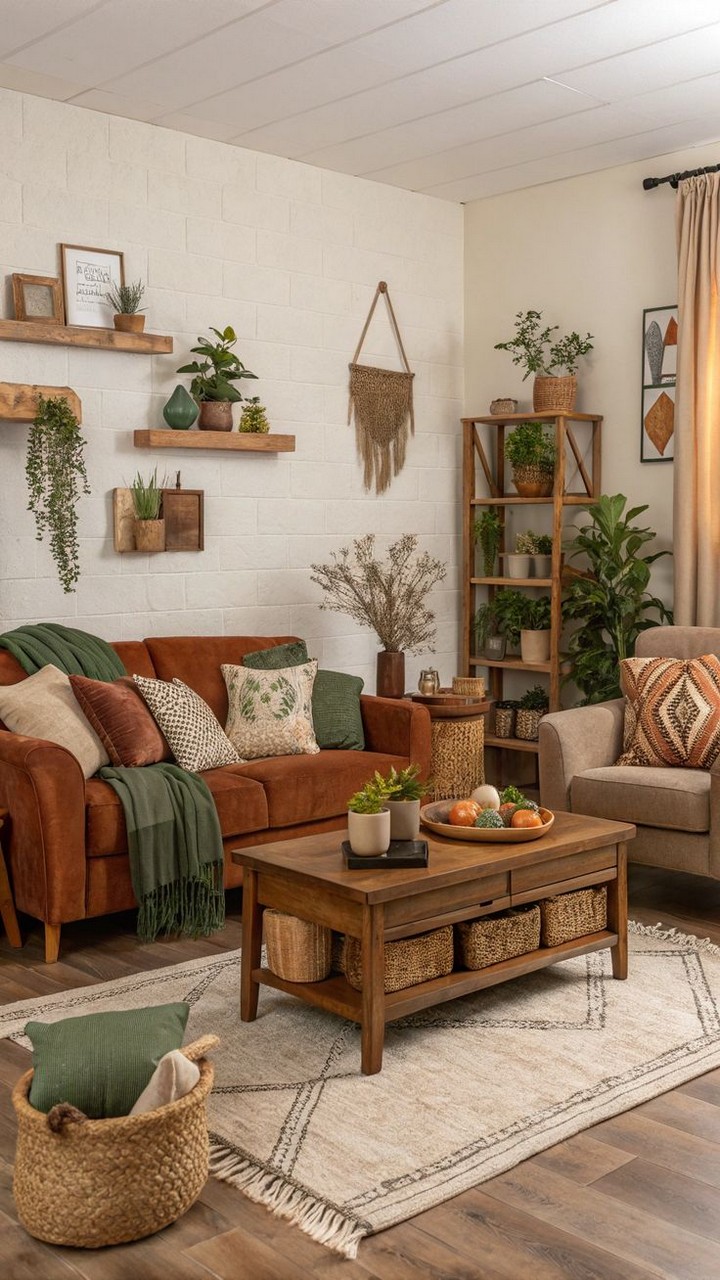
Incorporating natural brown materials like rattan, jute, and wicker brings organic texture and warmth to living rooms. These materials reference biophilic design connecting interior spaces to nature while providing visual and tactile interest.
Consider a statement rattan chair, wicker pendant light, or substantial jute rug as anchor pieces. These natural brown elements pair beautifully with both neutral and colorful schemes, adding dimension without competing with other design elements.
This approach works particularly well in spaces with an earthy, bohemian, or coastal aesthetic, though these natural brown elements can also provide welcome contrast in more contemporary settings.
11. Brown Leather Accents
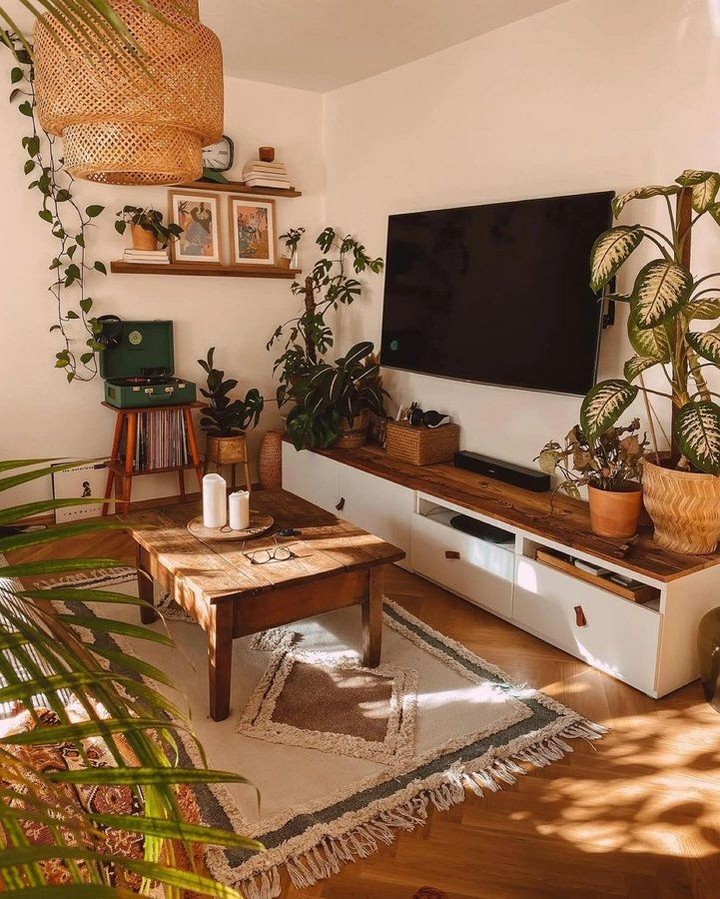
Beyond the statement leather sofa, smaller brown leather accents can add sophistication and texture to your living room. Consider leather ottoman poufs, magazine holders, throw pillow covers, or even leather-wrapped picture frames.
These smaller elements allow you to incorporate the luxury of leather without the investment or commitment of larger pieces. They add touchable texture and warmth while providing practical function.
Brown leather accents work particularly well against fabrics with visual interest like boucle, linen, or velvet, creating material contrast that feels intentional and refined.
12. Gradient Brown Color Scheme
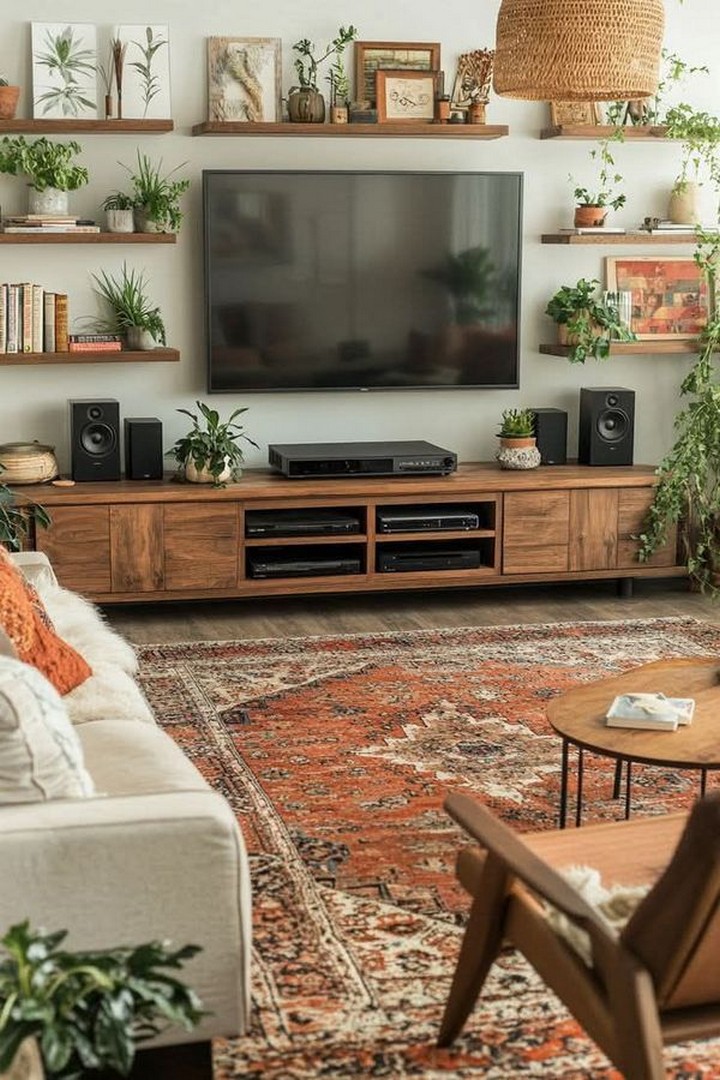
Creating a gradient effect with various shades of brown produces a sophisticated, layered look that feels both cohesive and visually interesting. Start with a light taupe or sand color for larger elements like walls or large furniture pieces, then layer in medium tones like caramel or tan, finishing with rich chocolate or espresso accents.
This approach creates depth through color variation while maintaining a harmonious overall effect. The gradient can flow horizontally across the room or vertically from floor to ceiling.
To execute this successfully, collect fabric and paint samples to ensure your browns coordinate well together, sharing either warm or cool undertones for a cohesive look.
13. Brown and Gold for Timeless Elegance
Pairing brown with gold creates a timeless elegance that references both traditional and contemporary design. The warmth of brown finds its perfect complement in the luminosity of gold accents.
Consider rich brown furniture or walls accented with gold-framed mirrors, lighting fixtures, side tables, or decorative objects. This combination works across design styles, from traditional to glam to modern.
For a contemporary interpretation, opt for matte gold or brass rather than highly polished finishes, and keep the overall look restrained rather than opulent. This creates a subtle sophistication that feels current rather than dated.
14. Brown Stone and Concrete Elements
Incorporating brown stone or concrete elements adds architectural interest and natural variation to living rooms. Consider a chocolate travertine coffee table, sandstone fireplace surround, or concrete side tables in taupe or walnut tones.
These materials bring the organic irregularity of natural elements indoors while providing durable, practical surfaces. Their inherent color variation creates visual interest even in monochromatic schemes.
Balance these harder surfaces with soft textiles and organic shapes to prevent the space from feeling cold or institutional. A plush area rug underfoot or abundant textiles can soften the overall effect while highlighting the beauty of the stone or concrete.
15. Earthy Brown and Green Combination
Brown pairs naturally with green, creating a palette that references the outdoors. This combination works especially well for living rooms, where the goal is often to create a restful, harmonious environment.
Consider chocolate brown furniture with olive green accents, or taupe walls with emerald accessories. Live plants provide the perfect green complement to brown furnishings, bringing this color relationship to life while adding the benefits of biophilic design.
This palette works across design styles but feels particularly appropriate in spaces with a connection to the outdoors, like rooms with large windows overlooking gardens or natural settings.
Embracing Brown’s Timeless Appeal
Brown has transcended design trends to establish itself as a timeless choice for living rooms. Its natural warmth, versatility, and grounding qualities make it an excellent foundation for spaces where comfort and style are equally important.
Whether you embrace brown through statement furniture, architectural elements, or subtle accents, this earthy hue creates living rooms that feel both current and enduring. By incorporating texture, thoughtful color pairings, and intentional contrast, you can elevate brown from basic to breathtaking.
The 15 ideas we’ve explored demonstrate brown’s remarkable range from rich chocolate statements to subtle taupe backgrounds. Each approach offers a different way to harness this versatile color’s inherent warmth and sophistication.
What brown decor ideas resonate with your living room vision? Have you successfully incorporated brown elements into your home? Share your experiences in the comments below, or explore our related articles on color psychology in interior design. If you’re ready to transform your living room with these brown decor ideas, our design consultants are just a click away!
With these ideas, your living room will be a cozy, sophisticated haven! 🏡✨


